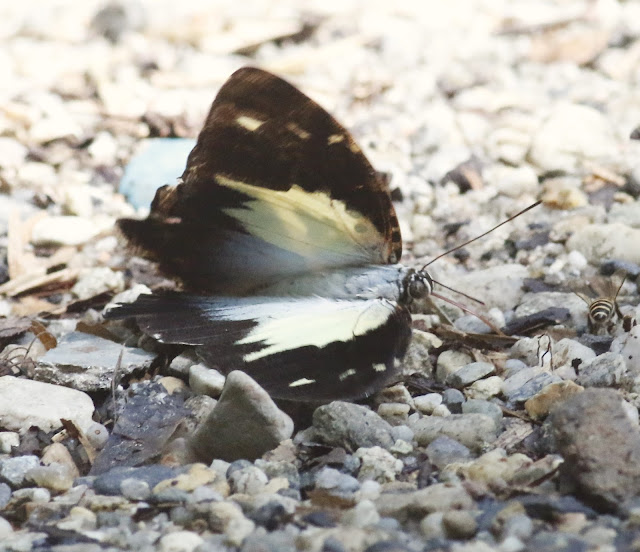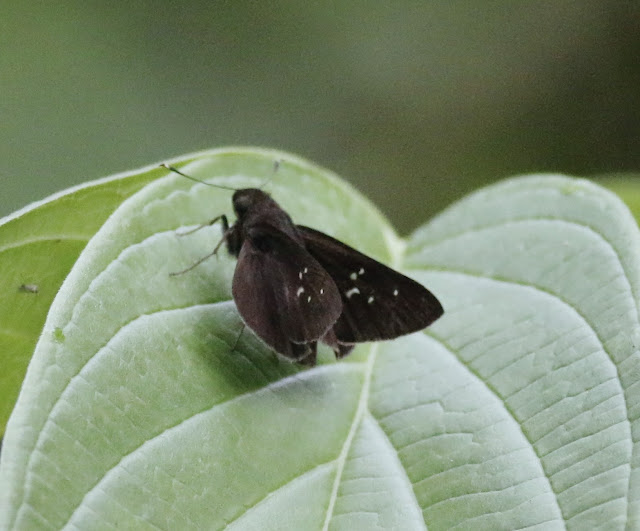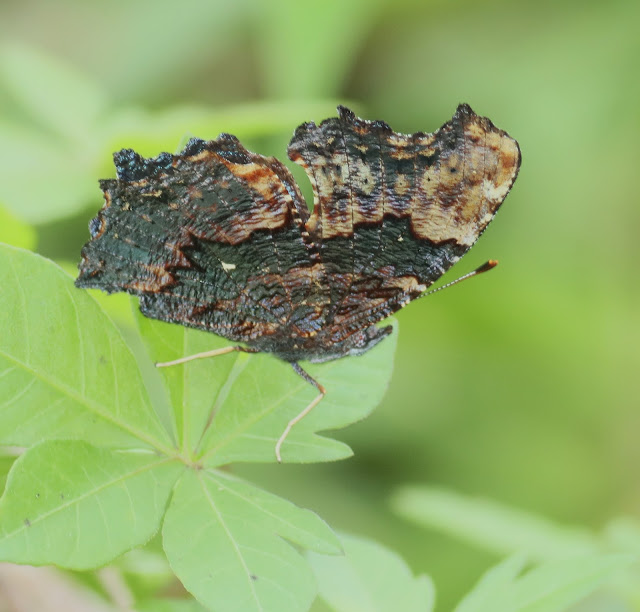In Peninsular Malaysia, we are blessed with many forests and jungles. Yes there are a few places where you can still find many nice and rare butterflies roaming around. I was really happy indeed to visit a butterfly haven deep inside a forest in the state of Pahang. It is considered a sacred / holy place for butterfly lovers. I departed from my house at 6.45am and managed to reach the site at around 9.30am after a meal of "Wan Tan Mee" along the way.
Some of them were big while some were quite small like this Common Pierrot (Castalius rosimon)
Although it is just a small butterfly (about 1.5cm) and not yet considered as tiny, you still need to get very close to the subject even with a 200mm lens.
The first mega acarid which flew in was already a lifer for me.
Lesser Gull (Cepora nadina andersoni)
It's a medium size species.
It was alone ! So it decided to mingle with the Chocolate Albatross (Appias lyncida)
One thing good about this place is that you don't have to go far to find the quarries. It was just a few hundred meters walk into the trail and you can already find them.
The next one which came was also a mega lifer.
This is a Glorious Begum (Agatasa calydonia calydonia). This is a protected species under the Malaysian wildlife Conservation Act (Act 716) and it is an uncommon one as well.
Mambang langit - Mambang tanah - Mambang segala Mambang! This could be a Mambang pokok.
This Begum will always fly up to the nearest tree whenever it felt threatened.
Here is an upperside view of the above Glorious Begum. This butterfly seldom opens its wings so I was thrilled even with a half opened one.
Another mega lifer came. This time it was in the form of a Polyura.
This is a Polyura jalysus jalysus / or in some references book it is called a Charaxes jalysus jalysus.
Its common name is Indian Yellow Nawab / Emerald Nawab
This is also another rare butterfly.
Then another Nawab came in.
This is a Common Nawab (Polyura athamas athamas). Apparently in CP5, this Ssp is considered as the commonest among all the Nawabs in Peninsular Malaysia.
This is a Dark-tipped Archduke or Dark Archduke (Lexias dirtea merguia)
This is essentially a forest Archduke unlike the more common Lexias pardalis. It flew in and rest for less than a minute then flew off and never came back.
The next butterflies are really big ones. They are the most prominent one at the site and they would stay here for the entire day while the rest would fly away once their stomach is filled.
This is a Red Helen (Papilio helenus helenus)
The above is a male.
This one is a Great Helen (Papilio iswara iswara)
At a glance it looks quite similar as the above Red Helen but if you look closely especially at its hindwing, you can see some blue crescent liked markings above its tornal red spots.
A view from the back of a Great Helen.
Due to its large size, it is not afraid of any nearby butterflies but the good thing is that it is also a gentle / non-aggressive species.
Here is a Malayan Owl (Neorina lowii neophyta) trying to hitch a ride on the back of a Great Helen. From the above photo you can see how large is the Great Helen.
This is an underside view of the Malayan Owl (Neorina lowii neophyta) under the bright sunlight which makes it look brownish in colour.
After having some fun with the Papilios, I decided to venture further into the trail. Lo and behold, I saw something dark among the leaves.






































































.JPG)